Winter planter ideas: 11 cold-weather containers that will look good for months
These pretty winter planter ideas are just the thing to take you right through autumn and winter into spring


Whatever your style, choosing what to plant up in winter containers is a great opportunity to channel your creativity in the garden. Pick planting ideas that will last right through winter and lift your spirits on gloomy days.
The latest pots and planters are made of ribbed metal, smooth concrete and stippled clay, and come in on-trend shades of gray and black. Pack them with plants that offer a long-lasting display right through autumn and winter, preferably ones that are low-maintenance too.
Be sure to position your planters where you can see them most for maximum impact. Choose sheltered spots you can see from the house or in porches and doorways to welcome you when you come home. Just remember to keep them fed, watered and deadheaded to keep them going until spring.
We've brought together some of our favorite winter planter ideas to get you inspired. Pair these looks with some of our winter garden ideas and you'll be all set for the cooler months.
12 beautiful winter planter ideas to brighten up your garden
From simple styles and bright berries to colorful blooms, there's something for everyone in these winter planter ideas.
1. Choose a coordinated look
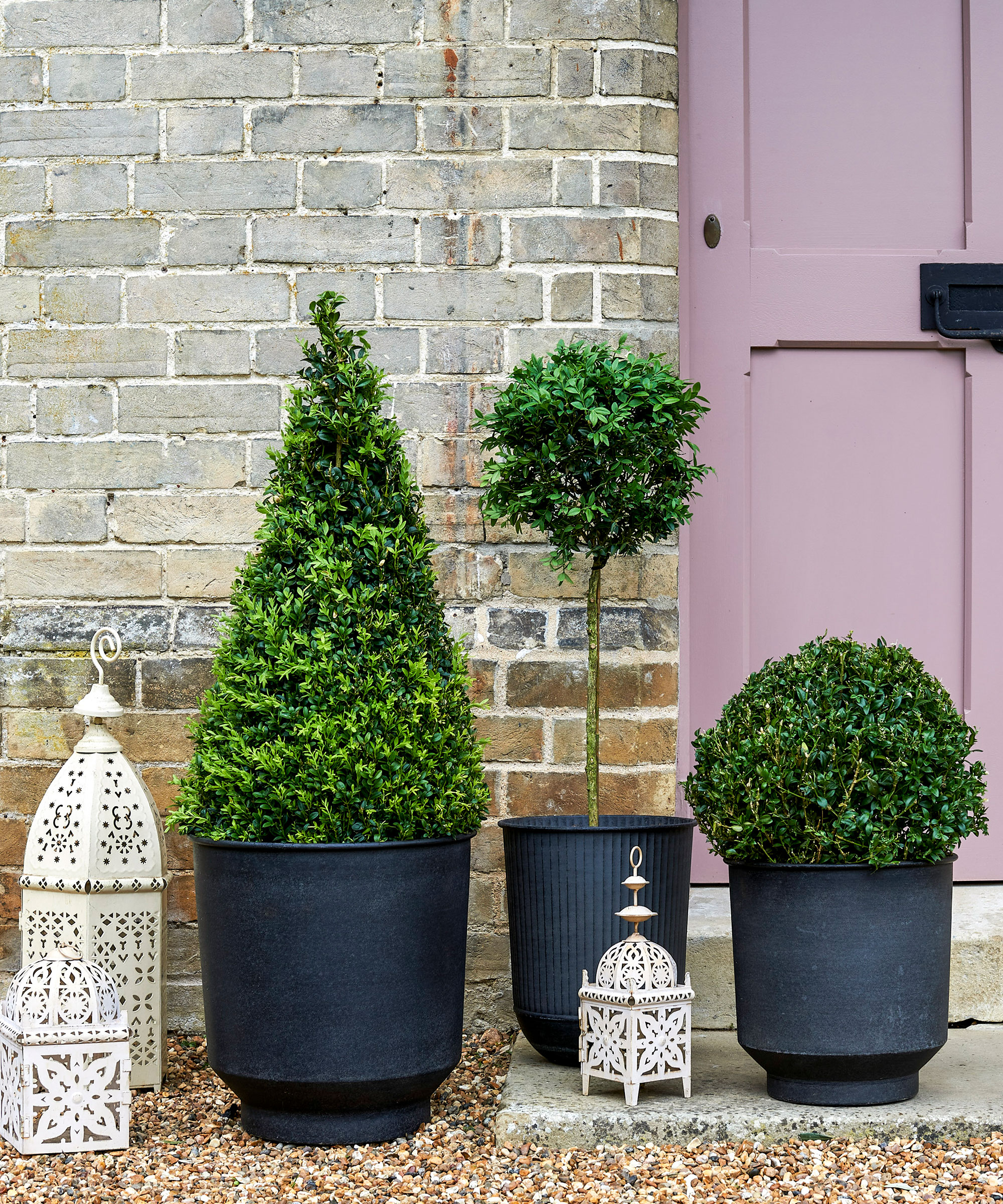
A collection of stylish box (buxus) plants will introduce a swish detail to your porch. Add your own touch by training your box plants into pyramids or balls. It's a style that will last way beyond the winter months too, as this look is a keeper.
Box is happy to be trimmed into neat shapes and this makes it one of the most popular topiary plants around. It's also easy to care for as it's so low maintenance, and it doesn't mind a shady spot either.
Position your pots against a backdrop of color and the geometric shapes will really pop. A great addition to your winter patio ideas.
2. Go for galvanized

Pots always look great grouped together and it's an even bigger win if they're a matching set. Galvanized metal planters are on trend this winter and they look good whatever the style of your garden, whether you're going for a cool urban look or something more traditional.
Another good thing about galvanized metal is that it weathers over time, so it will soon look like it's been there forever.
Plant up with a dwarf weeping willow tree that's ideal for small gardens and come spring you'll have a profusion of pussy willows to snip for indoor arrangements.
If you're on the lookout for more chic container inspiration, you'll find plenty in our garden planter ideas feature.
3. Add a touch of classical

The shape of your pot is everything when it comes to what it can add to your space as a design feature. Handsome Mediterranean-style pots and urns introduce a classic touch that never dates, especially when made of a material with an aged patina to give it a timeless quality.
For autumn and winter planting, always choose weatherproof pots that will withstand frost such as the latest clay products. Not only are they tough but they also catch the eye. Plant up with the best winter plants for pots, including flowering pansies and silver foliage, to add a touch of complementary color that will last for months.
4. Go for a classic combo
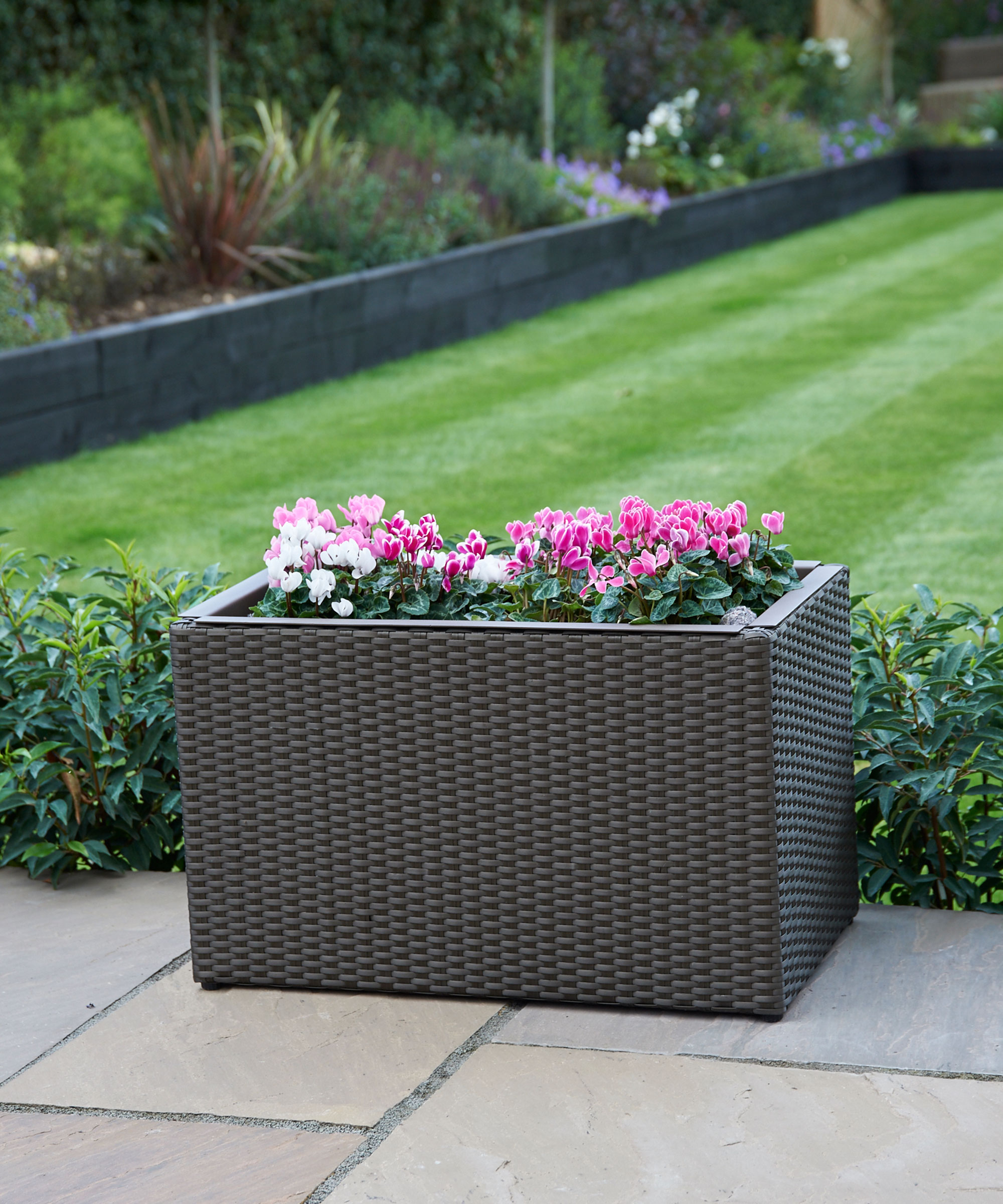
Just because summer's over, doesn't mean you have to pack up the rattan. Look for high-quality all-weather rattan weave styles with drainage holes that can be left outside year-round and start to think creatively.
Choose a mix of pink flowering cyclamen to add a color pop on gloomy days. Pink planting in a slate gray container is a classic combo that works every time and you'll love this look if you're a fan of contemporary styling.
Alternatively, pack your planter with tall grasses or bamboos so they work as a screen to add shelter and privacy to your seating area. Why not pair the finished display with some picks from our best garden furniture buying guide to complete the scene?
5. Opt for evergreens
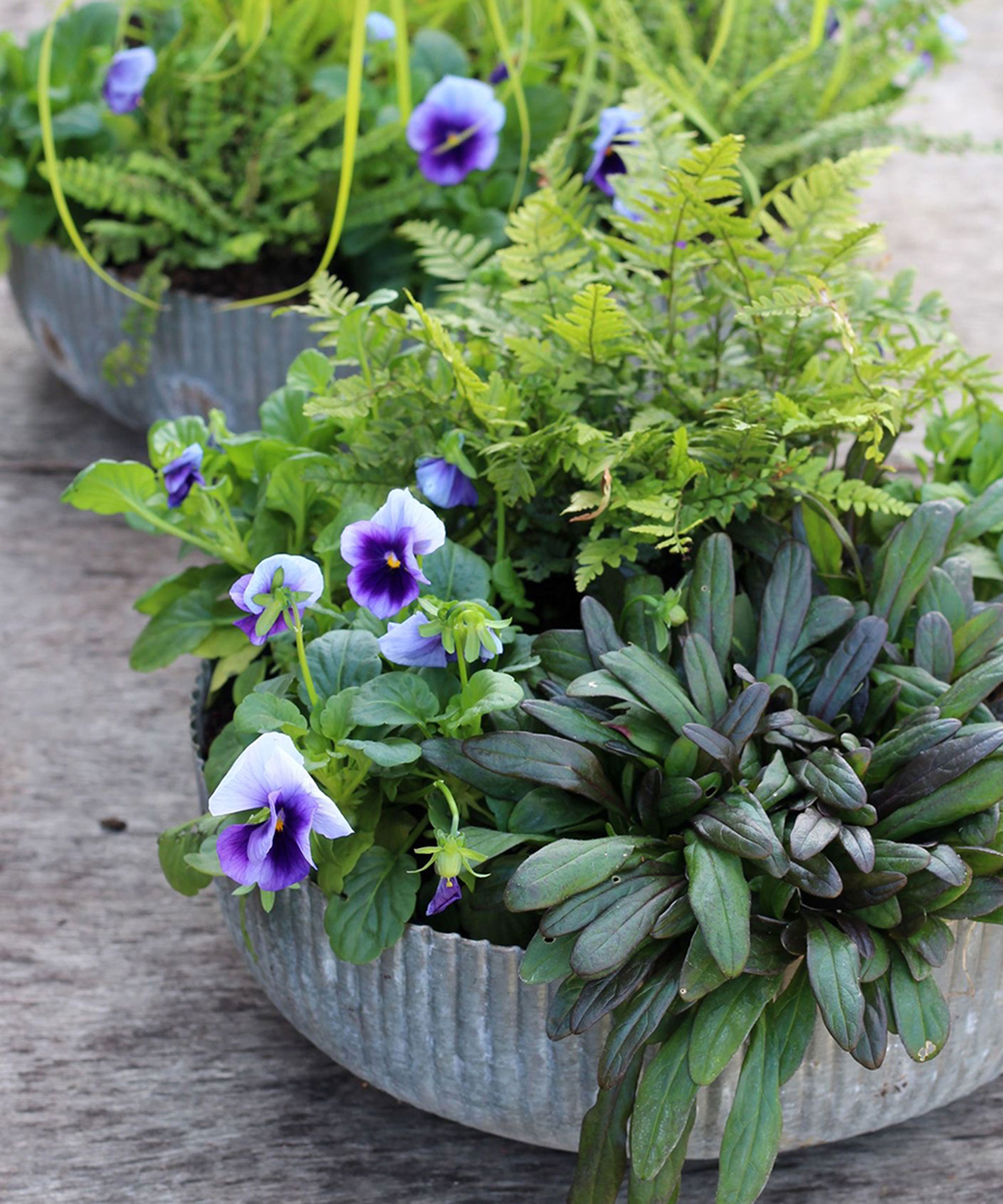
Buy an off-the-shelf, evergreen, autumn-to-spring, long-performing pot collection and you are guaranteed to get stunning results from September right round to June.
Choose plants like this mix of beautiful two-tone purple viola 'Beaconsfield', Ajuga reptans 'Chocolate Chip' and an evergreen fern Polystichum tsussimense, which perform well in sun or dappled shade.
Keep your plants moist until they are established and deadhead flowers regularly to encourage repeat flowering. Partner with a ribbed zinc bowl for max impact.
6. Choose a small tree
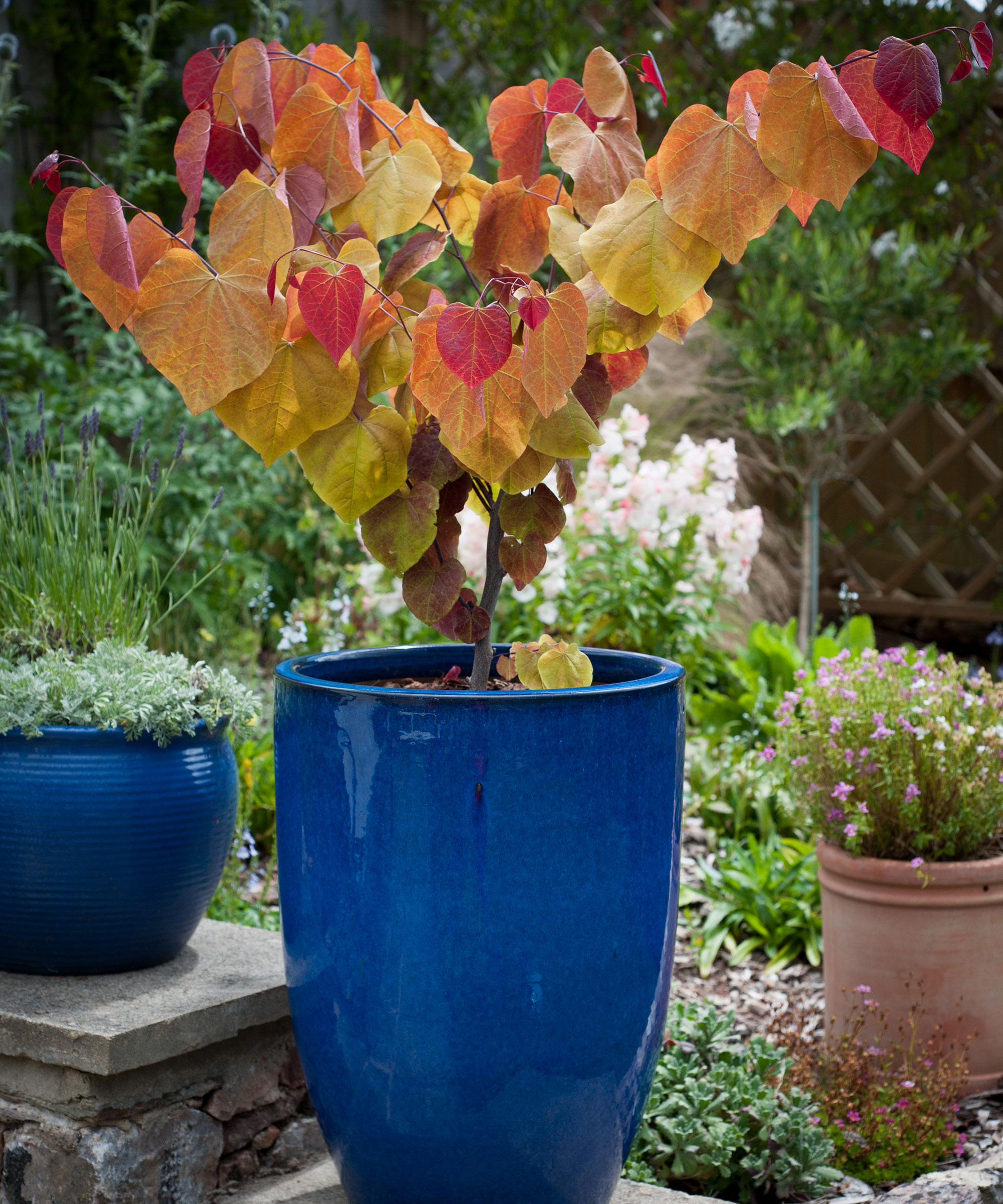
A small variety of tree with stunning foliage looks good for months on end and is a real winner for winter planters on patios and in porches. Even better if you choose one like this cercis 'Eternal Flame', which has small pink flowers come spring to extend the season for your winter planter ideas.
The foliage emerges as bright glossy red and fades to a lovely burnt orange, then to yellow. With it continually producing new growth all season, it maintains this fiery look of different colors for months, which many trees and plants only manage for a much shorter period. It's definitely one to add to the list if you're looking for the best plants for winter color.
7. Add color with berries
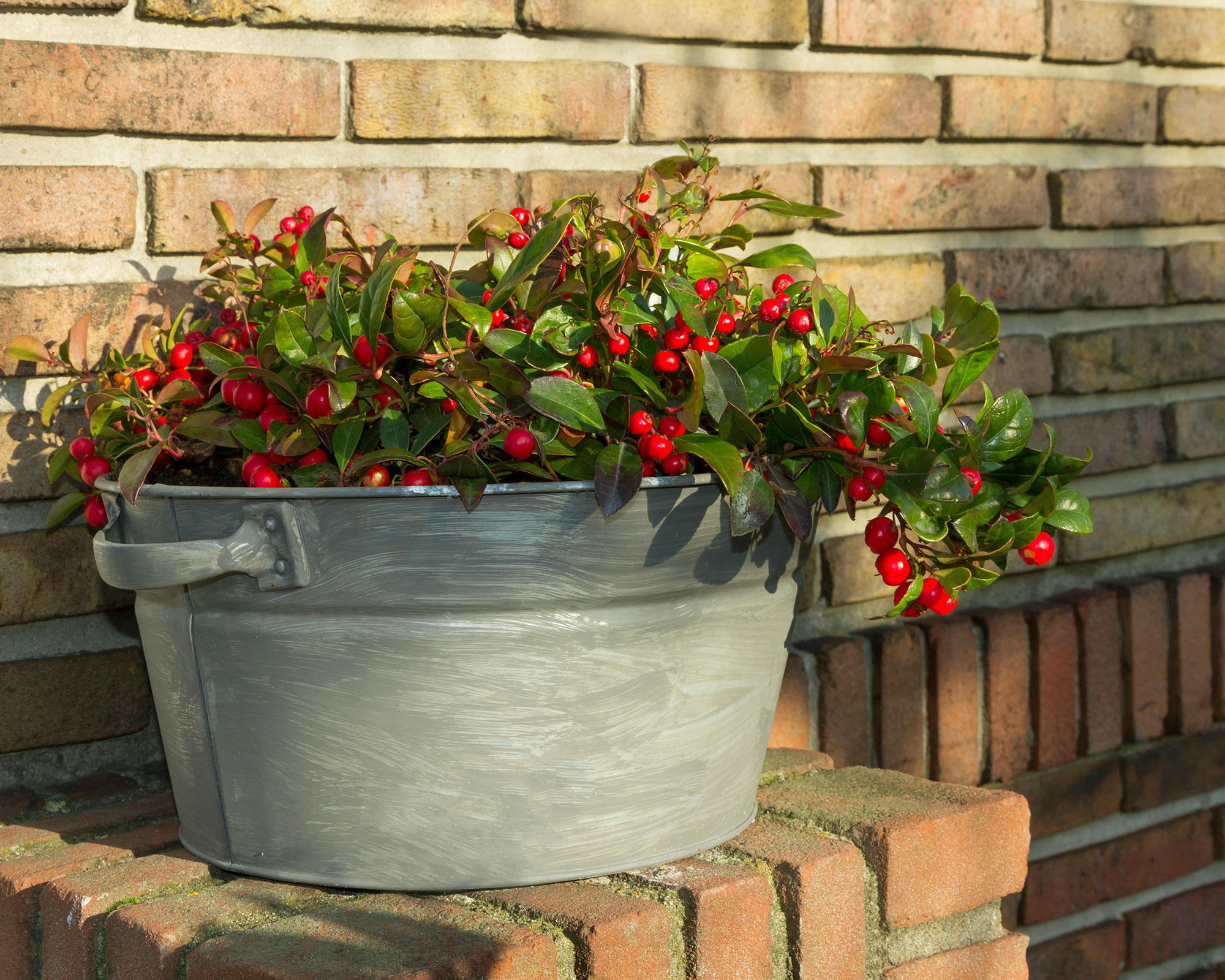
Berries are a natural fit when it comes to winter planter ideas. They add an eye-catching pop of color that's complemented by glossy evergreen foliage. They are easy to grow and make an attractive addition to patio or porch planters.
Try easy Gaultheria procumbens (also known as wintergreen and checkerberry), which is ideal for containers as it only grows to around 50cm (19.7in) tall. It looks especially good in galvanized metal planters either on its own or mixed in with other plants.
Another good berry option is a variegated holly, like IIex argenteam, which looks smart clipped into a neat lollipop shape.
8. Plant pretty primulas

Stunning primulas come in a range of colors and varieties and are a surefire way to perk up containers in your winter garden. Included in the family are native yellow cowslips, primroses, polyanthus and auriculas. They come on short stems and long stems and everything in between.
Their rainbow shades of yellow, pink, orange and red give much-needed early color to the garden. They start flowering in cold weather which gives them a head start on other plants and their season is a long one.
Grow them individually or mixed in with other flowers for winter planter ideas that will last for months. They're also a good pick if you're looking for the best plants for winter hanging baskets.
9. Pick pink and purple blooms

Like any other planting scheme in the garden, it's good to stick with a couple of colors to create the best effect. Cram too many colors into the mix and you will end up with a melee that looks messy.
If you opt for shades of pink and purple, you'll find there's plenty of choice for your winter planter. Choose from pansies and violas, cyclamen, polyanthus and heathers to build up a coordinated look.
You can also add bulbs like purple crocus and pink hyacinths to layer up the color. Our guide on how to plant crocus bulbs is full of useful advice.
10. Paint a picture with plants
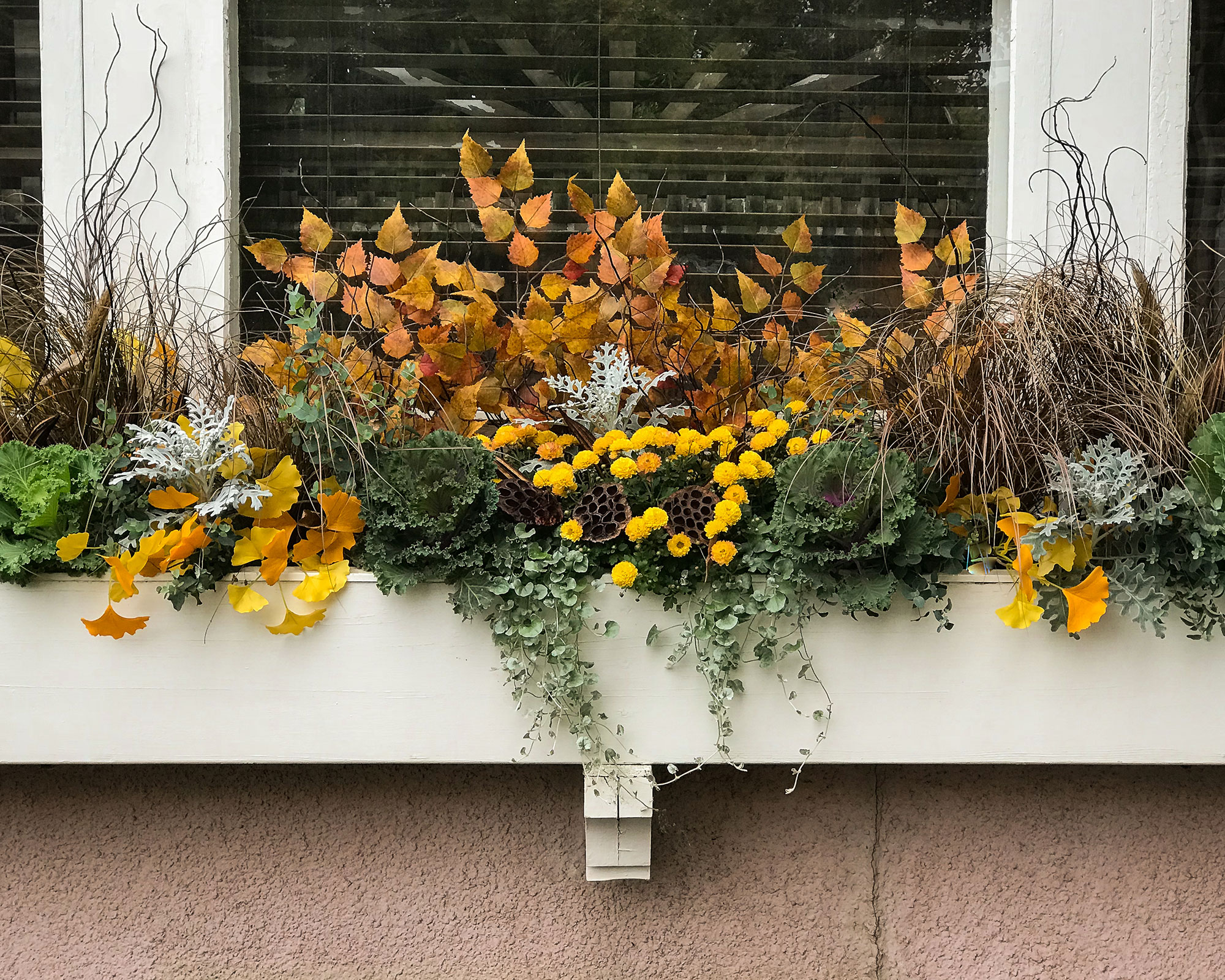
There's a real chance to get creative when it comes to planting up a winter container. Add your own style by choosing a mix of plants with color and texture variations that sit well together to achieve a painterly effect.
Remember to follow this easy formula to achieve expert-looking results: use tall thrillers to add drama, fillers to add body and depth to the heart of the display, and spillers that will trail or cascade over to soften the edges. It works every time.
Love the thought of pepping up your windows throughout the seasons? You can find more window box ideas in our feature.
11. Add year-round color

Old favorites are getting a makeover to bring a fresh new look to winter planter ideas. The new pansy variety 'Cool Wave Raspberry Swirl' will bring a bright splash of color to winter planters that lasts all year round.
With a cascading habit and vigorous growth, these plants will quickly create a long-lasting display that looks good for months. All you need to do is remember to keep deadheading them to make sure the flowers keep coming. What could be simpler?
What do you put in a planter for winter?
Fill winter pots generously as plants grow more slowly during the colder months and you don't want any obvious gaps.
Choose a combination of wintering-flowering blooms, bright berries, lush evergreen foliage and colorful stems to create some wow factor in pots and planters. Mix color, texture and shape for the best results. Be sure to layer in some spring bulbs too – this will give containers a lift in the early months of the year. Our guide on planting bulbs will help you get started.
Winter-flowering pansies, hardy cyclamen, pink heathers and delicate hellebores add pops of brilliant color that will lift even the gloomiest of days. Plants with glossy red berries such as wintergreen Gaultheria procumbens will add interest. It's always good to include a small evergreen, too, to create the 'bones' around which to build up your winter planter ideas.
Hardy grasses add color, texture and movement. Choose varieties like evergreen carex which will look good all winter long, and colorful architectural plants like phormium, which comes in deep pink, purple and bronze shades.
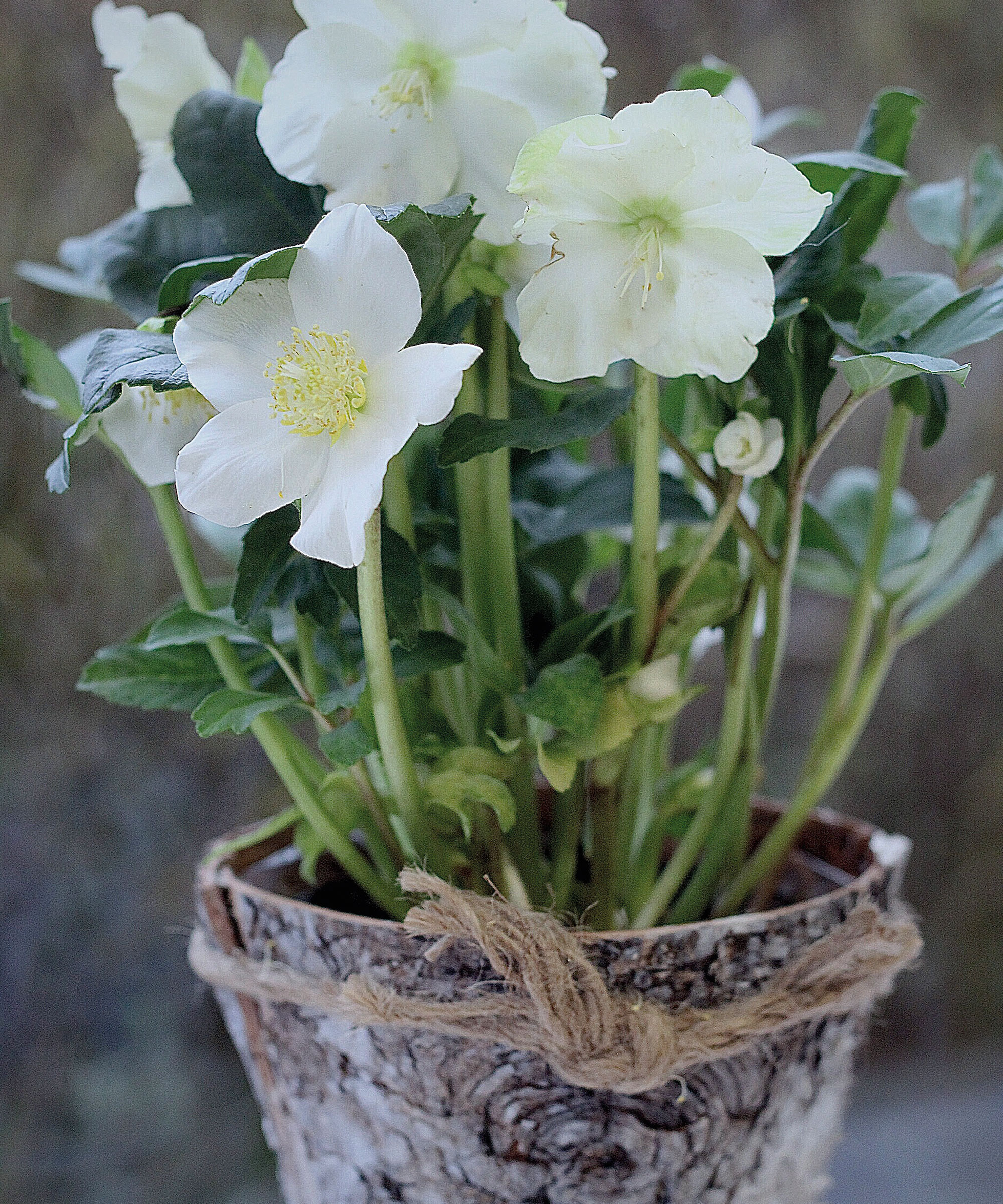
What do I do with my planters in the winter?
Choose planters that are frost-proof. Once planted up, put the pots where they will get the most light. Regularly check the compost for signs of drying out, and be careful not to overwater them.
All winter containers should have drainage to prevent roots from getting sodden. Use plenty of crocks or broken-up polystyrene plant trays. If possible, also raise the pot on feet or bricks for increased drainage and to avoid frost damage.
Group all your container plants in the most sheltered spot in the garden. One of the warmest spots is usually against the back wall of the house but porches are a good choice too. Clustering your planters together will help to protect them from harsh weather and high winds, and keep them looking good for longer.
If you need advice on how to protect plants from frost, you can find plenty of tips in our guide.

Lifestyle journalist Sarah Wilson has been writing about gardens since 2015. She's written for Gardeningetc.com, Livingetc, Homes & Gardens, Easy Gardens and Modern Gardens magazines. Having studied introductory garden and landscape design, she is currently putting the skills learned to good use in her own space where the dream is establishing a cutting garden.
